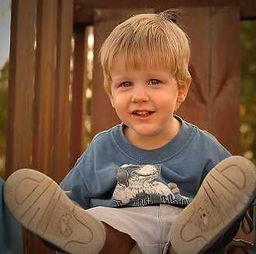Title: Effective Strategies for Managing Hyperactive Children
Managing hyperactive children requires a multifaceted approach that considers their unique needs and challenges. It's essential to create a supportive environment that promotes positive behaviors while addressing underlying factors contributing to hyperactivity. Here are some effective strategies for treating and managing hyperactivity in children:
Understanding Hyperactivity:
Hyperactivity is characterized by excessive motor activity, impulsivity, and difficulty sustaining attention. It can interfere with a child's academic performance, social interactions, and overall wellbeing. Understanding the underlying causes of hyperactivity is crucial for developing appropriate interventions.
Professional Assessment:
Consulting with healthcare professionals, such as pediatricians, psychologists, or child psychiatrists, is essential for accurate diagnosis and treatment planning. A comprehensive assessment can help identify any underlying medical conditions, such as attention deficit hyperactivity disorder (ADHD), learning disabilities, or sensory processing issues.
Behavioral Therapy:
Behavioral therapy techniques, such as applied behavior analysis (ABA) or cognitivebehavioral therapy (CBT), can help children learn to manage their impulses, improve selfcontrol, and develop coping skills. These therapies often involve structured interventions, reinforcement strategies, and social skills training tailored to the child's needs.
Parental Education and Support:
Educating parents about hyperactivity and effective parenting strategies is crucial for longterm success. Parent training programs, such as ParentChild Interaction Therapy (PCIT) or The Incredible Years, can teach parents how to set clear expectations, establish consistent routines, and use positive reinforcement to encourage desired behaviors.
Environmental Modifications:

Creating a supportive environment at home and school can help minimize triggers and distractions for hyperactive children. This may involve reducing sensory stimuli, providing organizational tools, and structuring tasks to promote success. Classroom accommodations, such as preferential seating, extra breaks, or visual schedules, can also support academic achievement.
Physical Activity and Recreation:
Regular physical activity and recreational outlets can help channel excess energy and improve focus in hyperactive children. Encouraging participation in sports, outdoor play, or structured activities like yoga or martial arts can promote selfregulation and reduce impulsivity.
Nutritional Interventions:
While there's no specific diet for treating hyperactivity, maintaining a balanced and nutritious diet can support overall health and wellbeing. Some children may benefit from dietary adjustments, such as reducing sugar or artificial additives, although individual responses may vary.
Medication Management:
In cases where behavioral interventions alone are insufficient, medication may be considered under the guidance of a qualified healthcare professional. Stimulant medications, such as methylphenidate or amphetaminebased drugs, are commonly prescribed for ADHD and can help improve attention and impulse control in some children.
Collaborative Approach:
Successful management of hyperactivity often requires collaboration among parents, educators, healthcare providers, and other relevant professionals. Regular communication and coordination ensure that interventions are consistent across settings and tailored to the child's changing needs.
Monitoring and Adjustment:
Monitoring the effectiveness of interventions and making necessary adjustments is essential for ongoing management of hyperactivity. Regular followup appointments with healthcare providers allow for review of progress, identification of any new challenges, and modification of treatment plans as needed.
Conclusion:
Managing hyperactive children requires a comprehensive approach that addresses behavioral, environmental, and physiological factors contributing to their symptoms. By combining evidencebased interventions, parental support, and collaborative efforts, it's possible to help hyperactive children thrive and reach their full potential.








